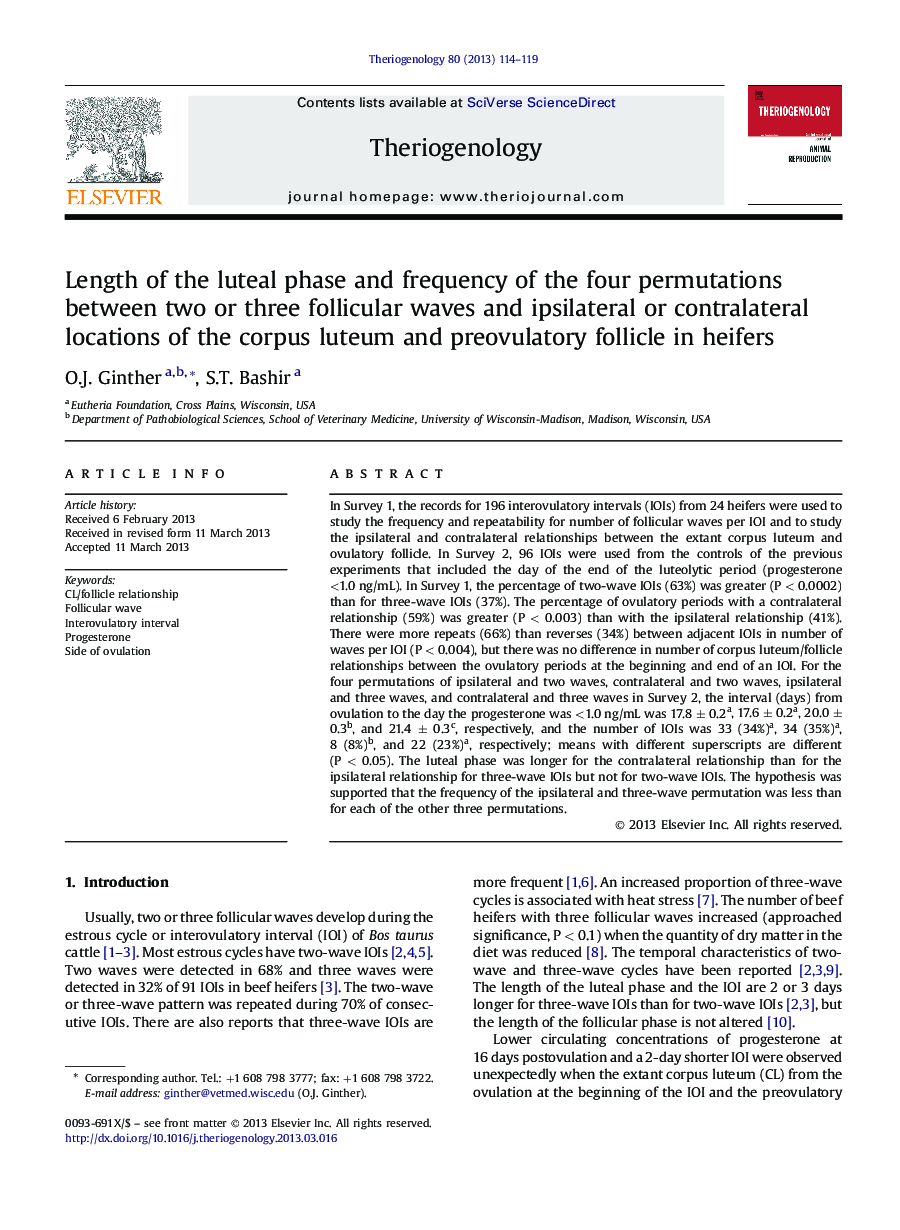| Article ID | Journal | Published Year | Pages | File Type |
|---|---|---|---|---|
| 10892502 | Theriogenology | 2013 | 6 Pages |
Abstract
In Survey 1, the records for 196 interovulatory intervals (IOIs) from 24 heifers were used to study the frequency and repeatability for number of follicular waves per IOI and to study the ipsilateral and contralateral relationships between the extant corpus luteum and ovulatory follicle. In Survey 2, 96 IOIs were used from the controls of the previous experiments that included the day of the end of the luteolytic period (progesterone <1.0 ng/mL). In Survey 1, the percentage of two-wave IOIs (63%) was greater (P < 0.0002) than for three-wave IOIs (37%). The percentage of ovulatory periods with a contralateral relationship (59%) was greater (P < 0.003) than with the ipsilateral relationship (41%). There were more repeats (66%) than reverses (34%) between adjacent IOIs in number of waves per IOI (P < 0.004), but there was no difference in number of corpus luteum/follicle relationships between the ovulatory periods at the beginning and end of an IOI. For the four permutations of ipsilateral and two waves, contralateral and two waves, ipsilateral and three waves, and contralateral and three waves in Survey 2, the interval (days) from ovulation to the day the progesterone was <1.0 ng/mL was 17.8 ± 0.2a, 17.6 ± 0.2a, 20.0 ± 0.3b, and 21.4 ± 0.3c, respectively, and the number of IOIs was 33 (34%)a, 34 (35%)a, 8 (8%)b, and 22 (23%)a, respectively; means with different superscripts are different (P < 0.05). The luteal phase was longer for the contralateral relationship than for the ipsilateral relationship for three-wave IOIs but not for two-wave IOIs. The hypothesis was supported that the frequency of the ipsilateral and three-wave permutation was less than for each of the other three permutations.
Related Topics
Life Sciences
Agricultural and Biological Sciences
Animal Science and Zoology
Authors
O.J. Ginther, S.T. Bashir,
